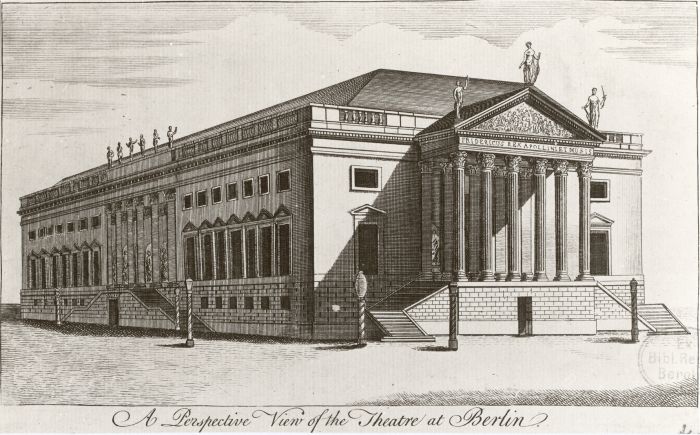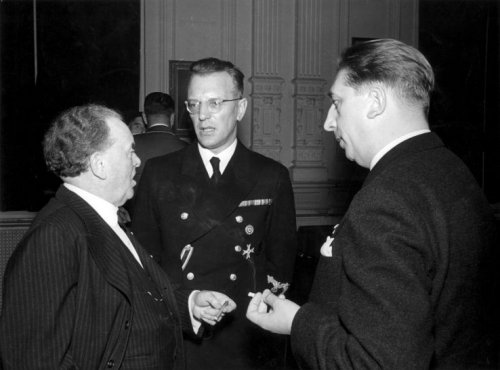|
Der Geburtstag Der Infantin
''Der Geburtstag der Infantin'' is a “dance-pantomime” in one act by Austrian composer Franz Schreker, based on the Oscar Wilde novella ''The Birthday of the Infanta''. Background The work was commissioned by the sisters Elsa and Grete Wiesenthal, two former apprentice dancers from the Vienna Court Opera.Christopher Hailey: 'Franz Schreker: A cultural biography' (Cambridge University Press, 1993) The work was composed in just ten days and first performed in Vienna on 27 June 1908 as part of the ‘Kunstschau’ organised by the group of artists around Gustav Klimt. It brought Schreker widespread recognition and led to the offer of a publishing contract with Universal Edition.Christopher Hailey: introduction to published score (UE 31426) The composer revised the score in 1910, adding an extra scene near the beginning (‘Die Infantin’) and rewriting the final scene. Instrumentation The ballet is scored for a chamber orchestra of two flutes (second doubling piccolo), two oboe ... [...More Info...] [...Related Items...] OR: [Wikipedia] [Google] [Baidu] |
Franz Schreker
Franz Schreker (originally ''Schrecker''; 23 March 1878 – 21 March 1934) was an Austrian composer, conductor, teacher and administrator. Primarily a composer of operas, Schreker developed a style characterized by aesthetic plurality (a mixture of Romanticism, Naturalism, Symbolism, Impressionism, Expressionism and Neue Sachlichkeit), timbral experimentation, strategies of extended tonality and conception of total music theatre into the narrative of 20th-century music. Formative years He was born as Franz Schrecker in Monaco, the eldest son of the Bohemian Jewish court photographer Ignaz Schrecker, and his wife, Eleonore von Clossmann, who was a member of the Catholic aristocracy of Styria. He grew up during travels across half of Europe and, after the early death of his father, the family moved from Linz to Vienna (1888) where in 1892, with the help of a scholarship, Schreker entered the Vienna Conservatory. Starting with violin studies, with Sigismund Bachrich and Arnold R ... [...More Info...] [...Related Items...] OR: [Wikipedia] [Google] [Baidu] |
Trumpet
The trumpet is a brass instrument commonly used in classical and jazz ensembles. The trumpet group ranges from the piccolo trumpet—with the highest register in the brass family—to the bass trumpet, pitched one octave below the standard B or C trumpet. Trumpet-like instruments have historically been used as signaling devices in battle or hunting, with examples dating back to at least 1500 BC. They began to be used as musical instruments only in the late 14th or early 15th century. Trumpets are used in art music styles, for instance in orchestras, concert bands, and jazz ensembles, as well as in popular music. They are played by blowing air through nearly-closed lips (called the player's embouchure), producing a "buzzing" sound that starts a standing wave vibration in the air column inside the instrument. Since the late 15th century, trumpets have primarily been constructed of brass tubing, usually bent twice into a rounded rectangular shape. There are many distinc ... [...More Info...] [...Related Items...] OR: [Wikipedia] [Google] [Baidu] |
Dance In Austria
{{Portal, Austria Austria Austria Austria, , bar, Östareich officially the Republic of Austria, is a country in the southern part of Central Europe, lying in the Eastern Alps. It is a federation of nine states, one of which is the capital, Vienna, the most populous ... Performing arts in Austria ... [...More Info...] [...Related Items...] OR: [Wikipedia] [Google] [Baidu] |
Max Terpis
Max Terpis, real name ''Max Pfister'', also ''Max Pfister-Terpis'', (1 March 1889 in Zürich – 18 March 1958 in Zollikon) was a Swiss dancer, choreographer, director and psychologist. Publications * ''Tanz und Tänzer'' (1946) Filmography * ''Marriage (1929 film), Marriage'' Bibliography * Robert Heiß, Hildegard Hiltmann (editor): ''Der Farbpyramiden-Test nach Max Pfister''. on WorldCat Huber, Bern 1951. * Wolfgang Martin Schede: ''Farbenspiel des Lebens. Max Pfister Terpis. Architekt Tänzer Psychologe 1889–1958.'' Atlantis, Zürich 1960. * Elisa Frasson: ''Max Terpis, Tanz und Tänzer.'' Dissertation. Universität Venedi ... [...More Info...] [...Related Items...] OR: [Wikipedia] [Google] [Baidu] |
Berlin State Opera
The (), also known as the Berlin State Opera (german: Staatsoper Berlin), is a listed building on Unter den Linden boulevard in the historic center of Berlin, Germany. The opera house was built by order of Prussian king Frederick the Great from 1741 to 1743 according to plans by Georg Wenzeslaus von Knobelsdorff in the Palladian style. Damaged during the Allied bombing in World War II, the former Royal Prussian Opera House was rebuilt from 1951 to 1955 as part of the Forum Fridericianum square. Nicknamed ''Lindenoper'' in Berlin, it is "the first theater anywhere to be, by itself, a prominent, freestanding monumental building in a city." History Names Originally called the ''Königliche Oper'' (Royal Opera) from 1743, it was renamed as the ''Preußische Staatsoper'' (Prussian State Opera) in 1919, then as the ''Deutsche Staatsoper '' in 1955. Until 1990, it housed the state opera of East Germany. Since 1990, it is officially called the ''Staatsoper Unter den Linden'' (State Ope ... [...More Info...] [...Related Items...] OR: [Wikipedia] [Google] [Baidu] |
Willem Mengelberg
Joseph Wilhelm Mengelberg (28 March 1871 – 21 March 1951) was a Dutch conductor, famous for his performances of Beethoven, Brahms, Mahler and Strauss with the Concertgebouw Orchestra in Amsterdam. He is widely regarded as one of the greatest symphonic conductors of the 20th century. Biography Mengelberg was the fourth of fifteen children of German-born parents in Utrecht, Netherlands. His father was the Dutch-German sculptor Friedrich Wilhelm Mengelberg. After studies in Utrecht with the composer and conductor Richard Hol, the composer Anton Averkamp (1861–1934) and the violinist Henri Wilhelm Petri (1856–1914), he went on to study piano and composition at the Cologne conservatory (now the Hochschule für Musik Köln), where his principal teachers were Franz Wüllner, Isidor Seiss and Adolf Jensen. In 1891, when he was 20, he was chosen as General Music Director of the city of Lucerne Switzerland, where he conducted an orchestra and a choir, directed a music school, tau ... [...More Info...] [...Related Items...] OR: [Wikipedia] [Google] [Baidu] |
Concertgebouw Orchestra
The Royal Concertgebouw Orchestra ( nl, Koninklijk Concertgebouworkest, ) is a Dutch symphony orchestra, based at the Amsterdam Royal Concertgebouw (concert hall). Considered one of the world's leading orchestras, Queen Beatrix conferred the "Royal" title upon the orchestra in 1988. History The Concertgebouw opened on 11 April 1888. The Concertgebouw Orchestra was established several months later and gave its first concert in the Concertgebouw on 3 November 1888. This performance was conducted by the orchestra's first chief conductor, Willem Kes. 1888–1945: Kes and Mengelberg Kes served as the orchestra's chief conductor from its 1888 founding to 1895. In 1895, Willem Mengelberg became chief conductor and remained in this position for fifty years, an unusually long tenure for a music director. He is generally regarded as having brought the orchestra to a level of major international significance, with a particular championing of such then-contemporary composers as Gustav Mah ... [...More Info...] [...Related Items...] OR: [Wikipedia] [Google] [Baidu] |
Harp
The harp is a stringed musical instrument that has a number of individual strings running at an angle to its soundboard; the strings are plucked with the fingers. Harps can be made and played in various ways, standing or sitting, and in orchestras or concerts. Its most common form is triangular in shape and made of wood. Some have multiple rows of strings and pedal attachments. Ancient depictions of harps were recorded in Current-day Iraq (Mesopotamia), Iran (Persia), and Egypt, and later in India and China. By medieval times harps had spread across Europe. Harps were found across the Americas where it was a popular folk tradition in some areas. Distinct designs also emerged from the African continent. Harps have symbolic political traditions and are often used in logos, including in Ireland. History Harps have been known since antiquity in Asia, Africa, and Europe, dating back at least as early as 3000 BCE. The instrument had great popularity in Europe during the ... [...More Info...] [...Related Items...] OR: [Wikipedia] [Google] [Baidu] |
Percussion
A percussion instrument is a musical instrument that is sounded by being struck or scraped by a beater including attached or enclosed beaters or rattles struck, scraped or rubbed by hand or struck against another similar instrument. Excluding zoomusicological instruments and the human voice, the percussion family is believed to include the oldest musical instruments.''The Oxford Companion to Music'', 10th edition, p.775, In spite of being a very common term to designate instruments, and to relate them to their players, the percussionists, percussion is not a systematic classificatory category of instruments, as described by the scientific field of organology. It is shown below that percussion instruments may belong to the organological classes of ideophone, membranophone, aerophone and cordophone. The percussion section of an orchestra most commonly contains instruments such as the timpani, snare drum, bass drum, tambourine, belonging to the membranophones, and cy ... [...More Info...] [...Related Items...] OR: [Wikipedia] [Google] [Baidu] |
Timpani
Timpani (; ) or kettledrums (also informally called timps) are musical instruments in the percussion family. A type of drum categorised as a hemispherical drum, they consist of a membrane called a head stretched over a large bowl traditionally made of copper. Thus timpani are an example of kettle drums, also known as vessel drums and semispherical drums, whose body is similar to a section of a sphere whose cut conforms the head. Most modern timpani are ''pedal timpani'' and can be tuned quickly and accurately to specific pitches by skilled players through the use of a movable foot-pedal. They are played by striking the head with a specialized drum stick called a ''timpani stick'' or ''timpani mallet''. Timpani evolved from military drums to become a staple of the classical orchestra by the last third of the 18th century. Today, they are used in many types of ensembles, including concert bands, marching bands, orchestras, and even in some rock bands. ''Timpani'' is an Italian ... [...More Info...] [...Related Items...] OR: [Wikipedia] [Google] [Baidu] |
French Horn
The French horn (since the 1930s known simply as the horn in professional music circles) is a brass instrument made of tubing wrapped into a coil with a flared bell. The double horn in F/B (technically a variety of German horn) is the horn most often used by players in professional orchestras and bands, although the descant and triple horn have become increasingly popular. A musician who plays a horn is known as a list of horn players, horn player or hornist. Pitch is controlled through the combination of the following factors: speed of air through the instrument (controlled by the player's lungs and thoracic diaphragm); diameter and tension of lip aperture (by the player's lip muscles—the embouchure) in the mouthpiece; plus, in a modern horn, the operation of Brass instrument valve, valves by the left hand, which route the air into extra sections of tubing. Most horns have lever-operated rotary valves, but some, especially older horns, use piston valves (similar to a trumpet's ... [...More Info...] [...Related Items...] OR: [Wikipedia] [Google] [Baidu] |
.jpg)





